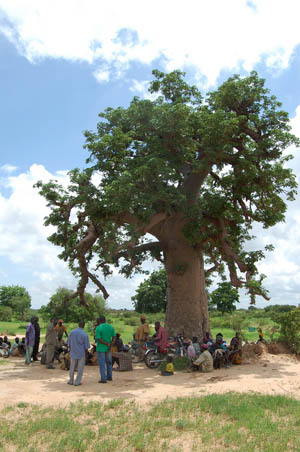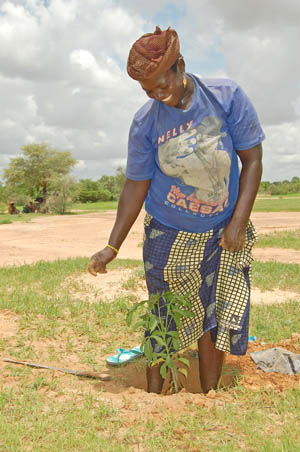The secret ingredient in tackling the food crisis

Often called the "upside-down tree" because of its unusual appearance, the baobab (Adansonia digitata) is a giant of a tree. Its cultural and spiritual significance is huge and as they represent such significant landmarks they are often the village meeting place.
It's great for Europe that the baobab fruit, recently approved by the EU as a "novel food", can now be an ingredient in smoothies and muesli. With maize and other staple foods more than doubling in price in Burkina Faso, it will also be a vital ingredient in tackling the food crisis.
For thousands of years Africans have relished the many foods from the baobab tree. Today villagers across Africa enjoy sherbetty biscuits, drinks, an iron-rich sauce and syrup made from the flour of the fruit pulp. In regions traditionally stalked by famine and malnutrition it packs a vital nutritional punch. with gram for gram, six times more vitamin C than oranges, which protects against scurvy and twice as much calcium as milk, which can prevent kidney failure.
Its nutritional value isn't limited to its fruit. Its leaves can be eaten fresh or dry and cooked up as a sauce, delivering twice the beta carotene of spinach and bursting with zinc which protects against birth defects.

Its seeds can be roasted and eaten as a delicious and protein-rich snack.
Even the large, pendulous white flowers of the baobab tree make a tasty edible snack.
Yaabyiri Bamogo from Burkina Faso says, "Fresh and dried baobab leaves are essential for us. They are vital to our daily diet and have a high economic value."
The baobab is just one of many trees that UK based charity TREE AID is helping families in Africa to secure for food and income to reduce their vulnerability during the food crisis. Adapted to drought, many local trees survive when other crops fail.
TREE AID's chief executive, Miranda Spitteler, says, "Locals call the baobab the nurse tree because of its many health giving properties. I call it the corner shop because it provides villagers in Africa with so many foods and medicines and even the ropes that pulls the bucket from the well is made from baobab branches."
For more information on the baobab and many other trees in Africa that can help tackle the food crisis and strengthen villagers' resistance to climate change impact, please visit www.treeaid.org.uk